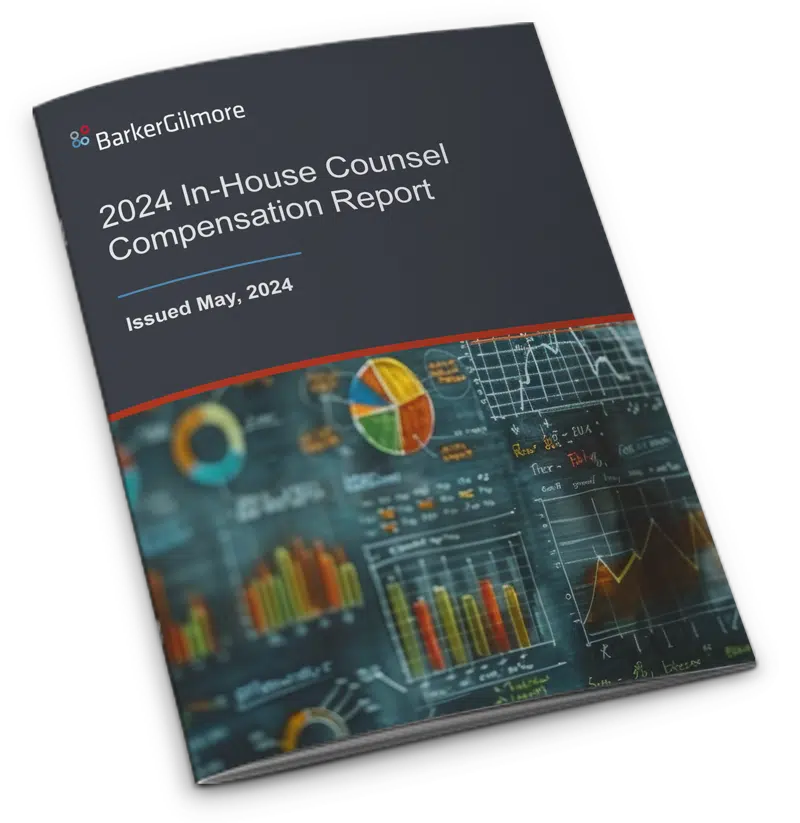Since the beginning of the pandemic, record numbers of women have changed positions or have left the workforce entirely. This upheaval has included female lawyers at all levels, greatly costing an organization. According to Gallup, it can cost one-half to two times an employee’s salary to replace that employee, which of course, includes recruiting costs.
But there are other costs too. Employers must consider the loss of knowledge, which is even more substantial when the attorney is a senior member of the team. The organization also must account for the time it will take to get a new attorney up to speed. Moreover, losing women leaders can cause a snowball effect as other women see leaders leaving for better opportunities.
How can your organization avoid losing female lawyers? First, understand the reasons female attorneys want to leave. And second, address those concerns by having an open and honest dialogue with women leaders and reinforce those conversations with real, tangible change.
Why Female Attorneys Are Leaving and Steps to Retain Them
1. Failing to Provide Opportunities to Advance
One of the top reasons female attorneys change positions is that there is no clear career path. One General Counsel of a private equity-backed company noted she wanted to be somewhere there were opportunities to gain experience and advance. She explained that, even with a great culture, an attorney can still have no opportunity to advance.
Female lawyers want to know that there is an upward path to continue climbing. Alternatively, women who have reached senior legal positions want to know that these roles will continue to challenge them. Women want to be promoted as much as men but are still less likely to be promoted or given an opportunity and may feel less comfortable advocating for those opportunities.
How to ensure female attorneys have opportunities to advance:
- Have a conversation with the attorneys to understand everyone’s professional goals, strengths, and values.
- Implement a plan to track the goals.
- Utilize mentorship, training, and regular check-ins to keep the organization and lawyer on track.
- Regularly analyze whether the organization provides equity in pay, opportunity, and resources for all employees.
2. A Lack of Flexibility and Work-Life Balance
Forty-nine percent of women leaders state that flexibility is one of the top three considerations before leaving for a new position or staying with a current company. Flexibility allows employees to maintain a work-life balance. Organizations can provide flexibility through remote or hybrid working arrangements, but employees also value being able to set flexible schedules. Women want to work in a way that allows them to have a full life outside work.
However, a preference for flexibility is more than having a life away from work. Women leaders reported fewer microaggressions and fewer comments about appearance while working remotely. Moreover, as one General Counsel observed, flexibility is about being treated as an adult and that the organization trusts and respects her.
How to provide female attorneys flexibility and help with work-life balance:
- Survey employees to understand how each works best and why.
- Evaluate offering hybrid or remote options and whether the organization can allow employees more control over scheduling.
- If the organization moves to a remote, hybrid, or asynchronous work environment, ensure training is provided on managing, and being managed, effectively in the new environment.
- Offer and advertise benefits, such as parental leave, which assist with flexibility and work-life balance.
3. A Lack of Visibility with Senior Leaders
When female attorneys are not given visibility with senior leaders, it is easy to miss opportunities for advancement. Female attorneys also want to have input into decisions and to have senior leaders recognize their contributions to the organization. Part of visibility includes empowering women to influence the culture and the autonomy to manage. A General Counsel from a technology company emphasized that she wanted to be in a position where she could influence policies to create a supportive, flexible environment.
There are many ways an organization can ensure senior leaders see and empower women professionally. A vice president in biotechnology relayed her experience of having a male senior partner at her firm ask her to go on a multi-city trip to pitch business even though she was seven months pregnant, instead of assuming she wouldn’t want to or be able to. Because of that mentorship, she stayed with the firm for several years. Visibility can be as simple as a senior leader saying, “let me engage you in this,” “let me bring you in on this,” or “let me get your opinion,” a woman chief compliance officer suggested.
How to encourage the visibility of female attorneys:
- Ensure women leaders are at the table and in the room when making decisions.
- Formalize an effective mentorship and sponsorship program, which requires senior executives to participate and ties the sponsorship to the executives’ performance metrics and goals for the year.
- Encourage employees to spotlight female attorneys’ achievements.
- Evaluate whether leaders are regularly providing women with valuable, visible work.
4. Inadequate Commitment to Diversity, Equity, and Inclusion
Female attorneys (along with attorneys that identify as LGBTQIA+ or as an underrepresented minority) want to be able to show up at work fully. Successful Diversity, Equity, and Inclusion (DEI) initiatives seek to create a sense of belonging for all employees. That sense of belonging includes having colleagues treat women fairly and respectfully, having colleagues value contributions from female attorneys, and having women feel connected to and accepted by colleagues.
When female attorneys do not feel a sense of belonging, it can be another reason for changing positions. Across all employees, research has linked a high sense of belonging to a 50% reduction in turnover risk. The General Counsel of a private equity-backed company acknowledged that if she were not at a place where she was recognized as a whole, she would not see herself staying with the company.
However, DEI efforts must extend beyond lip service. “I’m waiting for the rhetoric and the action to catch up,” a woman General Counsel of a technology company admitted. Effective DEI initiatives need action to support the mission statements because women look beyond those statements. For example, women analyze how diverse the C-suite is and which underrepresented groups are included on the legal teams when contemplating whether to change positions.
How to show a commitment to DEI:
- Create a DEI statement and plan, and have a Chief Diversity Officer or DEI Committee (or both) committed to implementing the plan.
- Ensure DEI includes not only recruitment but other components of the organization, such as promotions and recognition of the organization’s diversity.
- Encourage allyship.
- Ensure women are not the only ones working on DEI initiatives while simultaneously ensuring women receive credit for doing that work.
5. Lack of Responsibility for Employee Well-Being
Like DEI, female attorneys find a commitment to employee well-being essential. Women have reported that having a manager care about well-being is another important factor when deciding to stay or change positions. Employee well-being encompasses the quality of a person’s life, including the employee’s career, physical, financial, social, and community well-being.
The well-documented concerns about mental health and substance abuse in the legal industry also explain why a commitment to employee well-being is imperative. Female attorneys experience stress, anxiety, and depression at higher rates than male attorneys. And more female attorneys have considered leaving the legal profession because of burnout and stress.
Losing women leaders also affects the organization’s commitment to well-being. Women leaders are more likely to do more to support other employees’ well-being. One General Counsel provided an example of how she helped a young associate who was applying to be part of her team. The General Counsel warned the associate that the company did not offer parental leave, but she could provide the associate with a work-life balance. However, by doing more for other employees, women tend to burn out more frequently.
How to show a commitment to improving employee well-being:
- Gather feedback about the state of employees’ well-being.
- Analyze workloads and staffing to determine how the organization can improve employees’ well-being and minimize stress.
- Train managers to use empathy in managing employees, provide flexibility, and promote inclusion.
As always, reach out anytime if you or your organization may benefit from BarkerGilmore’s recruiting, leadership development, or legal and compliance department consulting services.
Connect with a legal recruiting advisor
* indicates required fields







